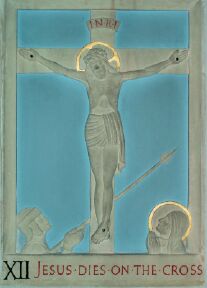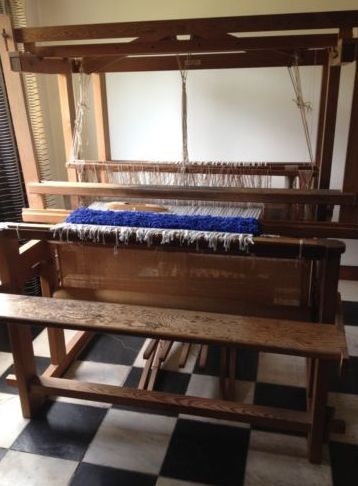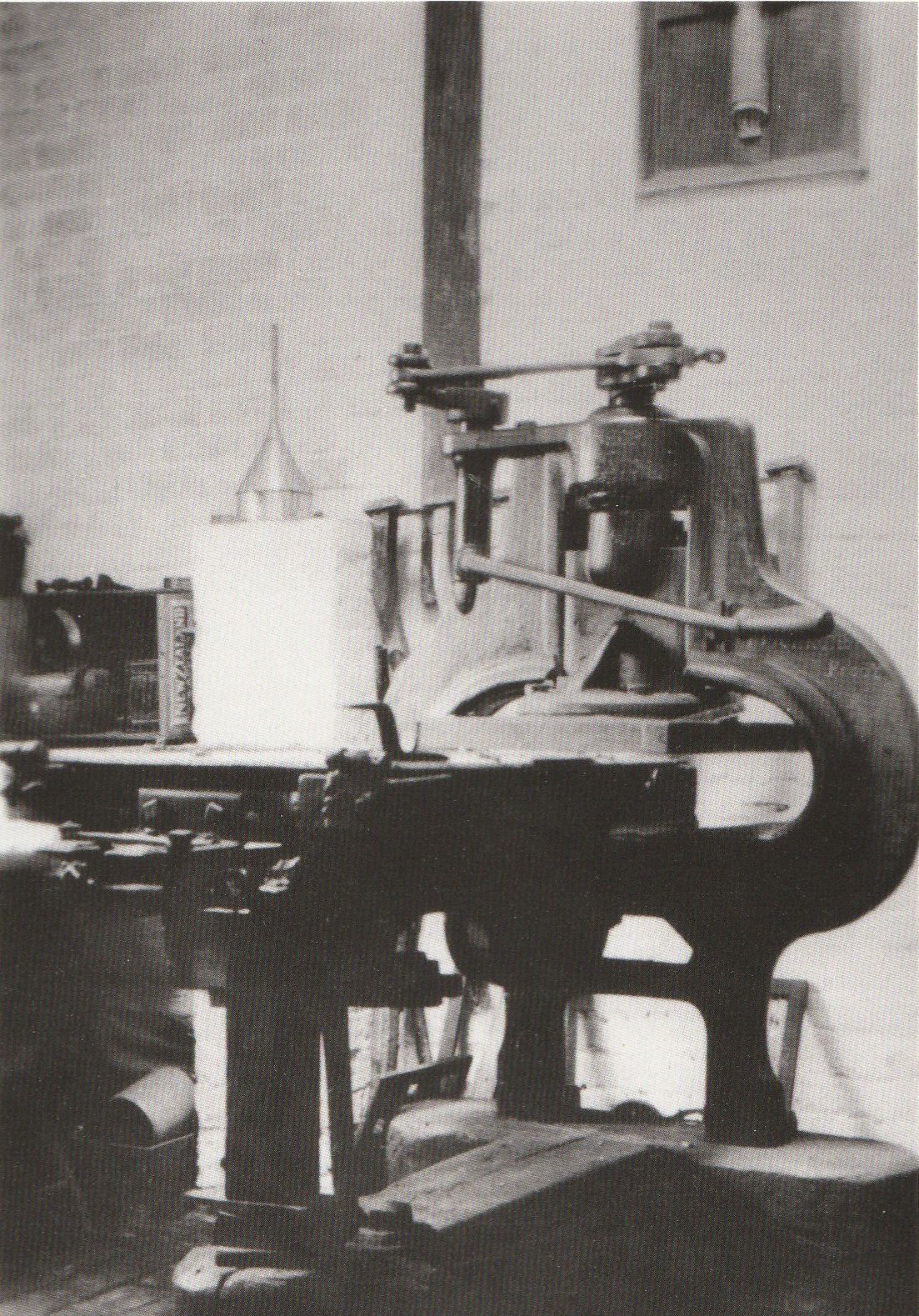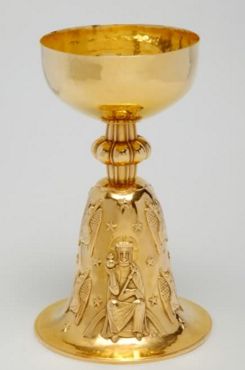Central to the idea of the idea of the guild was the creation of workshops where workmen could concentrate on achieving the Guild ideals of a close relation with their work, removing the distinction between artist and craftsman and producing artefacts which combined utility with beauty. For Gill, the workshop was an near-sacred space one where “slackness of living and of willing stop at the door”. Each master-craftsman had complete control of his workshop, but the buildings (and the on-site accommodation) were collectively owned by the Guild to whom rent was paid. This section looks briefly at the six areas of work, generally organised as workshops and studios, all of which thrived under the aegis of the Guild.
More details about the workshop buildings can be found on this page.
Table of Contents
Stone carving – Gill, Cribb, Skelton, Eager
Owing to the involvement of Gill, this was the most famous of the Guild’s workshops. While he was prolific during his Ditching years, his involvement with many inscription was restricted to initial drawing with the cutting being carried out by Cribb. After Gill left Cribb continued to work in he same tradition, using no power tools and charging for work strictly on the basis of time spent. In style Cribb was close to the medieval with a detectable influence of French and Italian Romanesque. He carved at least 20 sets of the Stations of the Cross during his lifetime. The main output of the workshop was church sculpture, inscriptions and tombstones. Cribb himself carved at least 20 sets of Stations of the Cross, some of the most important of the many hundreds of examples of the output of the workshop that survive. John Shelton was Eric’s Gill’s nephew and, though never a guild member, was apprenticed to Joseph Cribb. He maintained a workshop near Ditchling throughout his life and received many important commissions. His workshop is now run by his daughter.

Woodwork – George Maxwell, Philip Baker, John Maxwell
The carpentry workshop concentrated on church furniture (pre-war) and handmade looms (post-war), reflecting the Guild’s concern with religion and with traditional crafts. Many examples of this work are still use today, a result of Maxwell’s emphasis on honest workmanship which he set out as follows: “Good material, honestly used together with sound construction is the basis on which all work must be done if it is to give satisfaction in use or to the beholder”.

Printing – Hilary Pepler, Mark Pepler
Pepler used a nineteenth century Stanhope Press in the St Dominic’s Press, aiming, like the other Guildsmen, to be a craftsman and not a mechanic. He was opposed to mass production and had no ambition to produce cheap and shoddy work. His printing style was simple and direct avoiding the elaborate decorations that were a feature of Arts and Crafts publishing. It produced over 200 high quality books or pamphlets, including works by Fr. McNabb, Jacques Maritain, Raïssa Maritain, many illustrated by Gill and the other wood engravers and calligraphers at Ditchling such as David Jones, Desmond Chute, and Philip Hagreen. Printing was at the core of the Guild’s activities, with the periodical The Game being used to articulate and disseminate its philosophy.

Silversmith – Dustan Pruden, Winefride Pruden
The silversmith workshop was established by Pruden, who, like many of the Guildsmen, gained a great many important ecclesiastical commissions. Possibly the most famous is a gold chalice from the Roman Catholic Cathedral in Liverpool dating from 1959 which bears a wonderful figure of Christ in Majesty and is made from 300 wedding rings donated by widows, making it an extraordinary example of lay piety.

Weaving – Brocklehurst, Valentine KilBride, Thomas KilBride, Jenny KilBride
Weaving was carried on using traditional means and traditional vegetable dies. While a range clothing made with wool, silk cotton and linen was offered, the workshops fame rested on its range of clerical garments. These include habits, hair-shirts (designed for maximum discomfort) and vestments. From the sixteenth century, priests had worn heavy richly decorated garments for performing their sacred duties; Brocklehurst and KilBride were to establish a different style, simpler in form and made in plain fabrics with little embellishment. They were designed in a conical shape as seen in medieval brasses and when worn, displays a fine array of folds. This Gothic style, as it became known, is now universally popular. The workshop received many prestigious commissions including Washington Catholic Cathedral (1960) and Chichester Cathedral (1980).

Graphic design – etching, engraving, printmaking, calligraphy – Gill, Chute, Jones, Hagreen, Holloway, Clayton
The combined membership of Hagreen and Holloway spanned almost the entire history of the Guild and encompassed a variety of work. Hargeen earned a reputation as a young man as a portrait painter but on entering the Guild gave this up for wood engraving and ivory carving. Many of his woodcuts were used in the publications printed by the Saint Dominic Press. Holloway had began his artistic career as an etcher and had a strong reputation when he arrived at Ditchling; he was taught engraving by Hagreen in 1948 and his work included design cartography and lettering, a theme that ran through the nearly all of the workshops. Ewan Clayton specialised in Calligraphy, especially the idea of lettering as art, something in which he has become a world authority.


